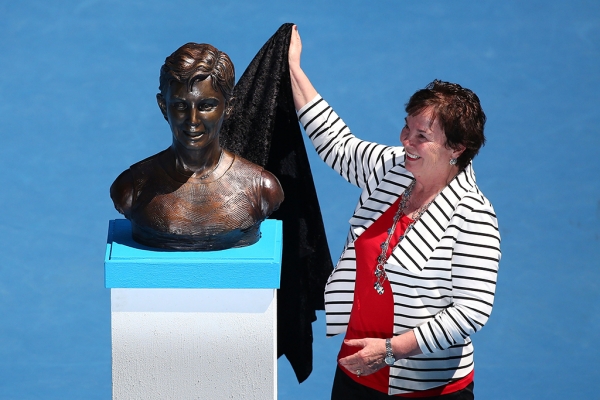Australia was the birthplace of two of the world’s leading pioneers behind women’s professional sport, yet most Australians know very little of their efforts.
In 1970, Judy Dalton (née Tegart) and Kerry Reid (née Melville) joined seven American women – a group led by Billie Jean King and known as the Original 9 – to form a breakaway women’s tennis tour that later became the WTA as we know it today.
Despite both being top-10 players and Grand Slam finalists, Dalton and Reid possess a relatively low profile in Australia compared with contemporaries like Margaret Court and Evonne Goolagong.
When reflecting on her achievements, Dalton describes her part in the Original 9 as a career “pinnacle”. Reid expresses similar pride.
Women’s pro tennis is born
After ‘Open tennis’ emerged in 1968, the nine women began to resent the growing inequity between men’s and women’s purses at professional events.
When a Los Angeles tournament in 1970 offered the men’s champion eight times more prize money than the women’s winner, the women boycotted that tournament and signed $1 contracts with World Tennis magazine publisher Gladys Heldman to compete at the inaugural women’s-only invitational event in Houston.
According to King, “we had one simple vision for our sport — we wanted any girl born any place in the world, if she was good enough, to have an opportunity to compete, be recognised for her accomplishments and make a living playing professional tennis.”
Neither Dalton nor Reid see themselves as feminists but to “take the plunge”, as Reid termed it – amid the threat of competitive bans issued by national federations, plus plenty of skepticism –required a strong sense of belief, vision and social justice.
Reid, then just 23, felt that if Dalton, King and co. were putting their reputations and careers on the line in 1970, then she too should.
Reid’s parents were worried, especially given the Lawn Tennis Association of Australia’s threat of bans.
“Gradually we started getting the tour going and they could see it was growing,” she said. “They never told me, ‘Don’t do it.’ I’d already done it anyway (laughter). They were supportive.”
At the time, the Original 9’s actions were revolutionary for female athletes. “We were a bit like the second wave of the suffragettes,” Dalton said.
Yet the story – and, notably, Dalton and Reid’s involvement – generated little interest in Australia compared with the United States.
Banned from competition
Any media coverage focused on the repercussions Dalton and Reid faced; the LTAA deemed the women “not in good standing” with the federation for their decision to play on the fledgling Virginia Slims women’s circuit, which clashed with Australian summer tournaments.
They were also banned from using racquets and shoes from Dunlop, an Australian Open sponsor in 1971 and 1972.
The Original 9 were expected to be banned from Grand Slam tournaments in 1971 until the ITF cleared them to compete. Yet Dalton and Reid faced more LTAA sanctions for wanting to play Virginia Slims events in New Zealand in December 1971, which clashed with Australian tournaments.

Their ban eventually ended on 5 January 1972. “The girls are entitled to earn a living from tennis and, at the moment, Australia cannot provide enough prize money,” LTAA president Wayne Reid told The Age.
Yet the political statement made by Dalton and Reid was met with apathy in their homeland. “I just remember there wasn’t all that much publicity about it,” Reid said.
Dalton added: “We could never have done (what we did in America) in Australia, because … I think Australia is much more of a chauvinist country. Even though we had the No.1 player in the world in Margaret Court, it wouldn’t have made any difference. The general public would never have come (to watch us).”
Legacy
Based in the United States, the women’s circuit took off. In its first full year in 1971, King earned more than $100,000, becoming the first female athlete to earn six figures in a single season.
Dalton recalls the money she earned while competing on the tour helped her and her husband pay off their home. “I certainly wasn’t the primary breadwinner – David was. But the money that I made helped pay it off that much quicker. When we did, the bank manager said he’d never had anybody pay it off that quick,” she laughed.
“I was lucky also – the bank manager let me have my own account. That was just unheard of. Women weren’t allowed to have a bank account of their own.”

When reflecting, Reid says the Original 9 never anticipated failing in their objectives.
“We were kind of shocked when we got banned. But now looking back on it, philosophically, I can see it was a big deal and they (the national federations) didn’t know quite how to handle it,” she said.
“Really proud of it, that we did that. That I stood up and that I was one of those girls. My daughters are very proud.”